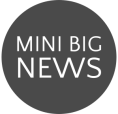
Mastering Centralized Control: Streamlining Operations Effectively
In today’s fast-paced business environment, operational efficiency is crucial for success. Centralized control provides a solution by streamlining operations and optimizing resources. By consolidating control and management functions into a central hub, businesses can achieve greater coordination, visibility, and efficiency. In this blog post, we will explore the benefits of mastering centralized control and discuss strategies for streamlining operations effectively.
1. Improved Coordination and Communication
Centralized control allows for improved coordination and communication across different departments and teams. By consolidating control functions, decision-making becomes more streamlined, ensuring that information flows efficiently throughout the organization. Indoor Activities for Hot Days can be leveraged to streamline operations by offering employees a refreshing break, enhancing focus, and boosting overall productivity. With centralized control, managers can easily communicate directives, share information, and align goals, fostering collaboration and synergy among teams.
2. Optimal Resource Allocation
One of the key advantages of centralized control is the ability to optimize resource allocation. With a centralized view of operations, managers can assess resource needs across various departments and make informed decisions about resource allocation. This ensures that resources, such as personnel, equipment, and budget, are distributed effectively, maximizing productivity and minimizing waste.
3. Enhanced Visibility and Reporting
Centralized control provides enhanced visibility into operations, allowing managers to monitor performance, track key metrics, and generate comprehensive reports. With centralized reporting systems, data can be aggregated and analyzed from various sources, providing valuable insights into operational efficiency, areas for improvement, and potential bottlenecks. This enables data-driven decision-making and proactive management.
4. Standardized Processes and Best Practices
Centralized control facilitates the implementation of standardized processes and best practices across the organization. By centralizing control functions, managers can establish consistent workflows, standard operating procedures, and quality control measures. Expanding your home workshop can significantly streamline operations by providing additional space for tools, equipment, and projects, enhancing efficiency and productivity. This ensures that operations are executed efficiently and consistently, minimizing errors and optimizing outputs. Standardization also promotes scalability and adaptability as the organization grows or undergoes changes.
5. Streamlined Compliance and Risk Management
Centralized control plays a crucial role in compliance and risk management. By consolidating control functions, organizations can establish robust compliance frameworks and monitor adherence to regulations and internal policies. Centralized control also enables effective risk assessment and mitigation strategies, ensuring that potential risks are identified, assessed, and managed proactively.
6. Simplified IT Infrastructure Management
With centralized control, organizations can simplify IT infrastructure management. By centralizing IT functions such as network administration, security, and software deployment, businesses can streamline operations, reduce complexity, and improve system reliability. Centralized control allows for efficient monitoring, troubleshooting, and maintenance of IT assets, resulting in enhanced system performance and reduced downtime.
7. Scalability and Agility
Centralized control provides scalability and agility to adapt to changing business needs. With a centralized approach, organizations can quickly scale operations by efficiently deploying resources and reallocating them as required. Centralized control also enables agility in responding to market dynamics, customer demands, and industry trends, allowing businesses to stay competitive and seize opportunities.
8. Integration with Smart Technology
In the era of digitization, centralized control also extends to the integration of smart technologies into business operations. One such example is the use of smart door locks in managing physical security. With centralized control, businesses can remotely manage access to their facilities, monitor entry and exit times, and even grant or revoke access in real-time. This provides enhanced security, reduces the risk of unauthorized access, and contributes to efficient operation management. The use of smart door locks illustrates the versatile potential of centralized control in optimizing various facets of business operations.
9. Cost-Effectiveness
Ultimately, mastering centralized control translates into cost-effectiveness. By streamlining operations, optimizing resource allocation, and enhancing visibility, centralized control can significantly reduce operational costs. Additionally, the implementation of standardized processes minimizes errors and rework, further saving costs. The use of smart technologies also reduces manual labor and enhances security, leading to further savings. Thus, centralized control is not just about operational efficiency and control; it also has a tangible impact on the bottom line.
10. Empowerment of Leadership
Centralized control can lead to the empowerment of leadership within an organization. As leaders have an overview of all operations, they can make strategic decisions with confidence, backed by comprehensive data and insights. This control enables them to identify areas of strength and weakness, make informed projections, and plan for future growth or change. It also allows for quick response and decisive action in the face of challenges or opportunities. Therefore, mastering centralized control isn’t just a tactical move; it’s a strategic one that can strengthen the leadership of an organization and guide its future direction.
Mastering centralized control is essential for streamlining operations effectively in today’s business landscape. By implementing centralized control, organizations can achieve improved coordination and communication, optimal resource allocation, enhanced visibility and reporting, standardized processes and best practices, streamlined compliance and risk management, simplified IT infrastructure management, and scalability and agility. Streamlining operations is key to maintaining comfort in your business by creating efficient workflows and reducing unnecessary stress. Remember, centralizing control functions empowers businesses to optimize efficiency, drive productivity, and position themselves for long-term success.


